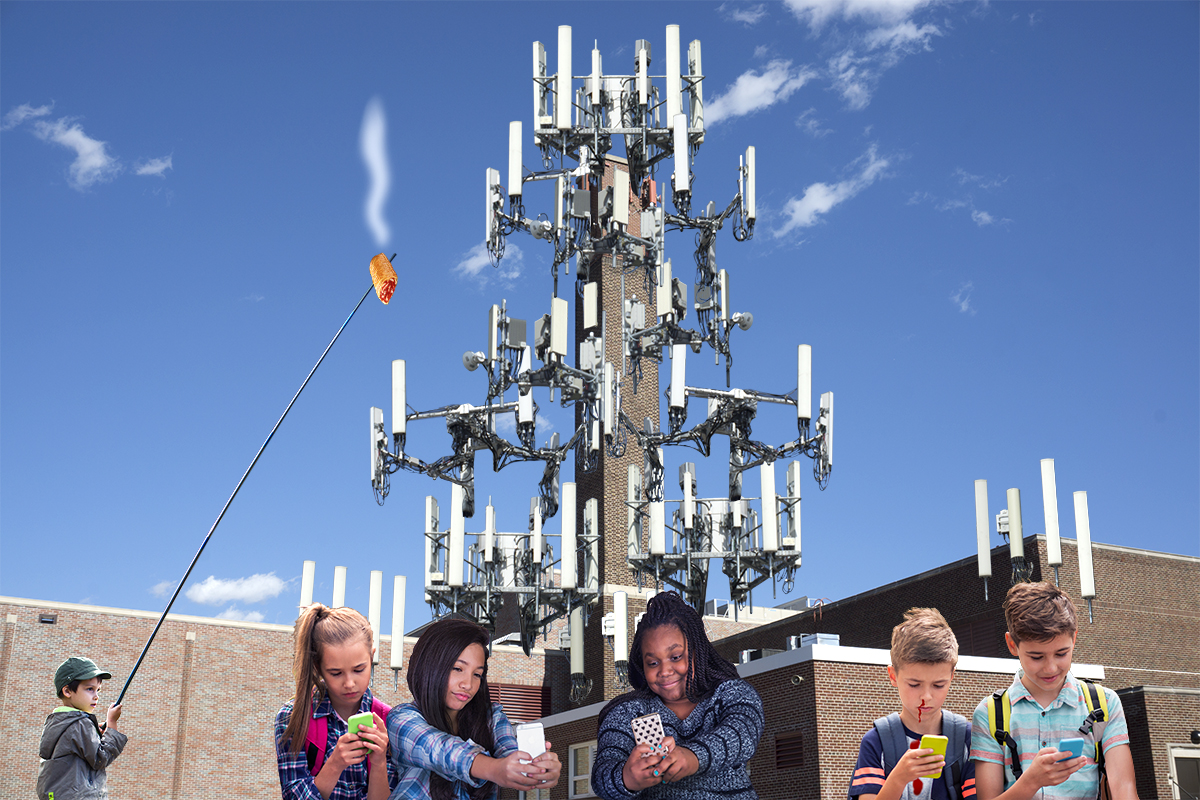
MINNEAPOLIS, MN-Win, win, win, is the best way to describe it. Last year, Hanford Middle School in south Minneapolis was struggling to survive budget cuts that were instead being put to better use by corporations in the form of tax cuts to help stimulate the growth of the economy. But recently, the school tapped into a new revenue stream by allowing several large telecoms to mount microwave emitters used for cell phone communication to the tall brick chimney in the middle of their property where hundreds of children learn and play all day.
Hanford is not the only such example of this approach to funding education. Big players like AT&T and T-Mobile are practically smashing down the front doors of schools across the country in a bid to eliminate dead spots in their network, and this means salvation for many cash strapped schools. The trend has been a novel way for many schools, particularly in lower income districts, to pay for things like science books and teachers.
Lindsay Fitzpatrick, Hanford’s principal, talked about how the students adjusted to the new equipment, “The first day of school they were like, wow, what’s that? Then when they learned what it was and what it meant for reception on their smart phones, they thought it was just awesome. Kids in private schools and higher income districts don’t know what they’re missing!”
Indeed, students do love the reception, some reporting signals high as 11 bars, making the chimney turned cell tower good for more than just great reception. Students have been utilizing it during lunch quarter hour to quickly heat microwavable foods like hot pockets. A critical time saver that allows them to quickly consume calories and get back to studying so our country can compete with China.
Matt Day, a spokesperson from AT&T pointed out, “The powerful microwave signals coming from equipment that give our customers great reception are completely invisible, so they don’t distract kids in class or playing directly below it. Remember, students are customers too, and because of their proximity, they get dibs on the best signal levels. Kids love doing things like Snap Chat during the minute or two they get between sitting in class.”
Because this program has been such a success, Hanford has been considering other unique ways of raising money for educating children. Lindsay Fitzpatrick added, “Several nuclear power facilities have reached out to us about storing lead sarcophagi with spent fuel rods in parts of our gym that aren’t being used for after school programs anymore. Hey, you never know, the sky’s the limit if you’re willing to think outside the box.”